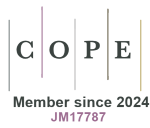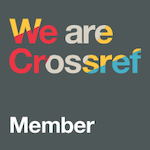After 100 years of life, is there an insulin crisis? The problem of insulin costs and the opportunity of biosimilar insulins
DOI:
https://doi.org/10.33393/ao.2024.2730Keywords:
Biosimilar insulin, Diabetes mellitus, Insulin costsAbstract
Considering other pharmacological approaches, also in the field of insulin therapy, the use of biosimilar drugs instead of originators could help to reduce the worldwide increasing costs of its related disease, that is, diabetes mellitus (DM), and the subsequent risk of insulin underutilization. Available evidences clearly demonstrate that biosimilar efficacy and safety are superimposable to those of the originator insulin with lower expenditure; despite this, however, their underutilization persists both in Eastern and in Western countries. Specific, regional activities are needed in order to improve biosimilar insulin use and to contribute to a substantial reduction of the costs of DM.
References
- Bommer C, Sagalova V, Heesemann E, et al. Global economic burden of diabetes in adults: projections from 2015 to 2030. Diabetes Care. 2018;41(5):963-970. https://doi.org/10.2337/dc17-1962 PMID:29475843 DOI: https://doi.org/10.2337/dc17-1962
- Davies MJ, Aroda VR, Collins BS, et al. Management of hyperglycaemia in type 2 diabetes, 2022. A consensus report by the American Diabetes Association (ADA) and the European Association for the Study of Diabetes (EASD). Diabetologia. 2022;65(12):1925-1966. https://doi.org/10.1007/s00125-022-05787-2 PMID:36151309 DOI: https://doi.org/10.1007/s00125-022-05787-2
- Russo GT, Giorda CB, Cercone S, De Cosmo S, Nicolucci A, Cucinotta D; BetaDecline Study Group. Beta cell stress in a 4-year follow-up of patients with type 2 diabetes: a longitudinal analysis of the BetaDecline Study. Diabetes Metab Res Rev. 2018;34(6):e3016. https://doi.org/10.1002/dmrr.3016 PMID:29669179 DOI: https://doi.org/10.1002/dmrr.3016
- Home PD, Mehta R. Insulin therapy development beyond 100 years. Lancet Diabetes Endocrinol. 2021;9(10):695-707. https://doi.org/10.1016/S2213-8587(21)00182-0 PMID:34480874 DOI: https://doi.org/10.1016/S2213-8587(21)00182-0
- Cucinotta D, Russo GT. Biphasic insulin Aspart in the treatment of type 2 diabetes mellitus. Expert Opin Pharmacother. 2009;10(17):2905-2911. https://doi.org/10.1517/14656560903391714 PMID:19929709 DOI: https://doi.org/10.1517/14656560903391714
- Kramer CK, Retnakaran R, Zinman B. Insulin and insulin analogs as antidiabetic therapy: a perspective from clinical trials. Cell Metab. 2021;33(4):740-747. https://doi.org/10.1016/j.cmet.2021.03.014 PMID:33826916 DOI: https://doi.org/10.1016/j.cmet.2021.03.014
- Fralick M, Kesselheim AS. The US insulin crisis. Rationing a life-saving medication discovered in the 1920s. N Engl J Med. 2019;381(19):1793-1795. https://doi.org/10.1056/NEJMp1909402 PMID:31693804 DOI: https://doi.org/10.1056/NEJMp1909402
- Fortune Business Insights. Pharmaceutical. Human Insulin Market Size. May 2023 https://www.fortunebusinessinsights.com/industry-reports/human-insulin-market-100395. Accessed November 2023.
- Liu Y, Yang M, Garg V, Wu EQ, Wang J, Skup M. Economic impact of switching from originator biologics to biosimilars: a systematic literature review. Adv Ther. 2019;36(8):1851-1877. https://doi.org/10.1007/s12325-019-00998-3 PMID:31168766 DOI: https://doi.org/10.1007/s12325-019-00998-3
- Joshia SR, Mittra SB, Rajb P, Suvarnab VR, Athalyeb SN. Biosimilars and interchangeable biosimilars: facts every prescriber, payor, and patient should know. Insulins perspective. Expert Opin Biol Ther. 2023;23(8):693-704. https://doi.org/10.1080/14712598.2022.2112664 DOI: https://doi.org/10.1080/14712598.2022.2112664
- Yang LJ, Wu TW, Tang CH, Peng TR. Efficacy and immunogenicity of insulin biosimilar compared to their reference products: a systematic review and meta-analysis. BMC Endocr Disord. 2022;22(1):35. https://doi.org/10.1186/s12902-022-00944-5 PMID:35123455 DOI: https://doi.org/10.1186/s12902-022-00944-5
- Agirrezabal I, Sánchez-Iriso E, Mandar K, Cabasés JM. Real-world budget impact of the adoption of insulin glargine biosimilars in primary care in England (2015–2018). Diabetes Care. 2020;43(8):1767-1773. https://doi.org/10.2337/dc19-2395 PMID:32527798 DOI: https://doi.org/10.2337/dc19-2395
- Agenzia Italiana del Farmaco (AIFA). National report on medicines use in Italy. 2022. https://www.aifa.gov.it/documents/20142/1967301/Rapporto-OsMed-2022.pdf. Accessed November 2023.
- Godman B, Haque M, Kumar S, et al. Current utilization patterns for long-acting insulin analogues including biosimilars among selected Asian countries and the implications for the future. Curr Med Res Opin. 2021;37(9):1529-1545. https://doi.org/10.1080/03007995.2021.1946024 PMID:34166174 DOI: https://doi.org/10.1080/03007995.2021.1946024
- Aladul MI, Fitzpatrick RW, Chapman SR. Healthcare professionals’ perceptions and perspectives on biosimilar medicines and the barriers and facilitators to their prescribing in UK: a qualitative study. BMJ Open. 2018;8(11):e023603. https://doi.org/10.1136/bmjopen-2018-023603 PMID:30455389 DOI: https://doi.org/10.1136/bmjopen-2018-023603
- Socal MP, Greene JA. Interchangeable insulins. New pathways for safe, effective, affordable diabetes therapy. N Engl J Med. 2020;382(11):981-983. https://doi.org/10.1056/NEJMp1916387 PMID:32160658 DOI: https://doi.org/10.1056/NEJMp1916387









